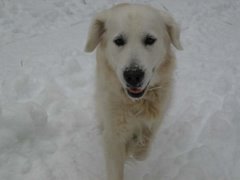Video on Galileo
Introduction to the Scientific Method
and non-arbitrary) representation of the world.
perceptions and our interpretations of natural phenomena, we aim through the
use of standard procedures and criteria to minimize those influences when
developing a theory.
As a famous scientist once said, "Smart people can come up with very good explanations for mistaken points of view."
In summary, the scientific method attempts to minimize the influence of bias or
prejudice in the experimenter when testing an hypothesis or a theory.
I. The scientific method has four steps
1. Observation and description of a phenomenon or group of phenomena.
2. Formulation of an hypothesis to explain the phenomena. In physics, the
hypothesis often takes the form of a causal mechanism or a mathematical
relation.
3. Use of the hypothesis to predict the existence of other phenomena, or to
predict quantitatively the results of new observations.
4. Performance of experimental tests of the predictions by several independent
experimenters and properly performed experiments.
Induction and Deduction are two different reasoning strategies. In
other words, they are two different ways to figure out the solution to
a problem.
With induction - you start with your own experience and then generalize
a rule. For example, The last ten times I touched the hot stove I
burned my hand. I bet every time I touch the hot stove my hand will be
burned. Another example, The last few times I eat green peppers I got
bad gas. I think eating peppers gives me bad gas.
With deduction - you start with a rule and then apply it to new
situations. For example: The sign at the amusement park says "Adult
Admission- $5" Therefore, I bet if I, an adult, try to enter I will be
charged five dollars. Another example: The law of gravity says that
what goes up must come down, so I bet if I throuw this ball up it will
fall back down.
“Why was new knowledge such a challenge to
traditional views?”
Research he following scientists: Ptolemy, Bacon, Descartes,
Vesalius, Galileo, Copernicus, Tycho Brahe, Kepler, Newton, Robert Hooke
Who | When | What Was Discovered | Method Used | Challenge to Old World View | Consequences |
| | | | |
|
Research the
trial of Galileo versus Cardinal Bellarmine and the Inquisition.
What are the particulars of the primary document (who, what, when,
where, why, etc.)?
What was the process of the trial?
What were the main arguments of Galileo and of Cardinal Bellarmine?
Why were Galileo’s views considered heresy?
What did this trial say about the Church’s authority?
How did the Church try to suppress Galileo and the Copernican Theory?
Two students present the arguments of Galileo
and The Church. The others represent the Clerical Jury and the
Secular Jury on the trial. Questions and answers and debate should represent
the point of view and use all available evidence.

No comments:
Post a Comment